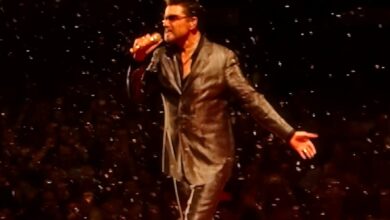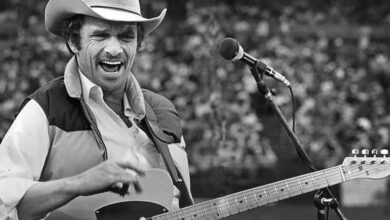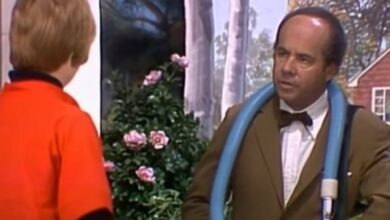1.6 Million Strong: The Day Heavy Metal Soundtracked the Fall of the Soviet Union
Moscow in late September 1991 had the simmering tension of a society on the brink of transformation. The old order, represented by the Soviet Union, was crumbling, yet no one knew exactly what would come next. Into this limbo, thousands of young fans poured toward the vast expanse of the Tushino Airfield, drawn not by slogans or ideology but by the promise of heavy guitars, booming drums and unfettered freedom. What awaited them was not just a concert—it felt like the herald of a new era.
By afternoon the airfield had become a swelling sea of people. Estimates vary wildly—some official figures put crowd size at half a million, while many fan accounts and later pieces argue it reached up to 1.6 million. Regardless of the exact number, the image is unforgettable: horizon-wide waves of bodies, packed shoulder to shoulder, all gathered for what they hoped would be a singular moment. Many of these fans had grown up watching smuggled rock tapes, or listening underground; here before them stood iconic Western bands, live and loud and finally in their midst.
As the festival lineup rolled forward, the nervous electricity in the air grew thicker. This wasn’t just a tour date—this was one of the first truly major open-air Western rock shows in Soviet Russia, arriving mere weeks after an attempted coup shook the very core of the system. Authorities were wary. Soldiers and riot police lined the perimeter, helicopters hovered overhead, the kind of security presence more common to political events than live music. The scene was equal parts revolutionary and surreal.
When the intro music — the familiar “Ecstasy of Gold” — blasted across the field, the crowd responded like a threshold had been crossed. For years that piece had opened shows for the headliner, but in this setting it sounded like a clarion call. Then the band launched into the opening chord of their first song and the airfield detonated. On stage, the frontman strode forward, guitar slung low, commanding the moment like a general leading one last charge. It was visceral, loud, monumental.
Down in the pit nearest the stage was sheer pandemonium, glorious and chaotic. Massive surges of bodies, fans hoisting friends overhead for a better vantage, the crowd itself becoming an instrument. At moments the swelling pressure spilled into the soldier-lined sections, and officials found themselves swept into the tide of adrenaline and music, headbanging or smiling despite duty and uniform. Watching the divide between repression and release collapse under the weight of a riff was like witnessing something historic.
From the stage everything felt amplified. The set leaned into the band’s heaviest arsenal—songs layered with tension, sorrow, fury. Every drum strike felt seismic, every solo burned through the open sky, every bass groove pulled the crowd deeper into the performance. This was no glam rock party. This was a reaffirmation of what rock was at its most raw and unfiltered—especially in a place where the sound had only just begun to feel free.
What also made the show exceptional was the calibre of the entire line-up and the context. Alongside the headliner, another band of hard-rock veterans brought their classic anthems; a groove-metal powerhouse brought an American edge; a blues-rock outfit provided grit; and local heroes completed the picture. Together, the mix felt like a global assault of rock culture, delivered on a scale hardly anyone in Moscow had imagined possible a few years earlier.
In among the roar and the riffs were moments that felt lifted from film. Fans in olive-green uniforms dropping their military caps into the tide, as though shedding a former identity. Others climbing scaffolds or towers for a better view, helicopters kicking up dust and debris into the sky, soldiers trying to stay serious while the music shook their ranks. The old system watched the new energy rise—and in some cases couldn’t help but join it.
Culturally and politically, the timing couldn’t have been more charged. The Soviet flag was already fluttering on its last steps; by official dissolution only months remained. And here on that airfield, Western rock music blasted like a thunderclap across the horizon, its sound challenging the silence of the old order. It wasn’t about manifestos on stage, but the act of gathering itself, the unified scream, felt like a statement: we’re here and we are loud.
And the numbers were breathtaking. While rock festivals had run large before, this edition entered legendary territory. Some cite the 1.6 million figure; others caution it’s hyperbole. Either way, Tushino on that day wasn’t just packed—it was monumental. A moving ocean of humanity, caught between past habits and future possibilities, all singing along to the same chorus.
In years since the footage and recordings from that day have taken on mythic status. Parts of the show were included in an official concert film. Bootlegs and fan footage proliferated, the internet giving new life to grainy VHS clips. The songs performed that day became relics for fans, proof of something larger than a show. The event lives on in both archive and memory, a moment frozen in time.
What makes this particular performance stand out in the annals of the band’s history is how it reshaped their relationship with the world. This wasn’t a bored arena crowd in a safe city. This was hundreds of thousands of people who felt something had shifted, who rallied behind the sound. The band seemed aware of that shift, fueled by the enormity of the moment rather than just going through the motions. It’s one thing to tour; it’s another to play a frontier.
For many who were there, the show is deeply personal. In a society where public expression had been policed and limited, losing oneself in the music, in the roar of thousands side by side, felt like an act of local rebellion, even liberation. After the amps quieted and the crowd dispersed, many walked away changed. Rock had ceased to be a distant echo—it was loud and alive and happening right here.
For the band itself, this concert became a milestone. They had already released their breakthrough studio album earlier that year; they had already been rising globally. But in Moscow, they saw a new kind of scale, a new kind of audience, a new kind of significance. It marked a turning point—not just for them as musicians, but for rock music’s penetration into places once sealed off.
Even today, clips from that day travel through timelines, appear in playlists, spark conversations. Some fans weren’t even born in 1991 but feel the awe of the moment via a YouTube upload, a bootleg clip, a memory passed down. Watching the footage—gray skies above, endless crowd below, the band launching into the refrain—it’s not just nostalgia, it’s the feeling of collective catharsis.
In the larger story of rock history, the Tushino Airfield show stands as one of those rare junctures where culture, politics, sound and timing converge. It didn’t make the political change, but it mirrored it: the old order faltering, a new expression rising. For a few thunderous hours, the microphone turned into a megaphone of freedom, the crowd became a statement, and the guitar riffs sounded like the starting gun of something new.





